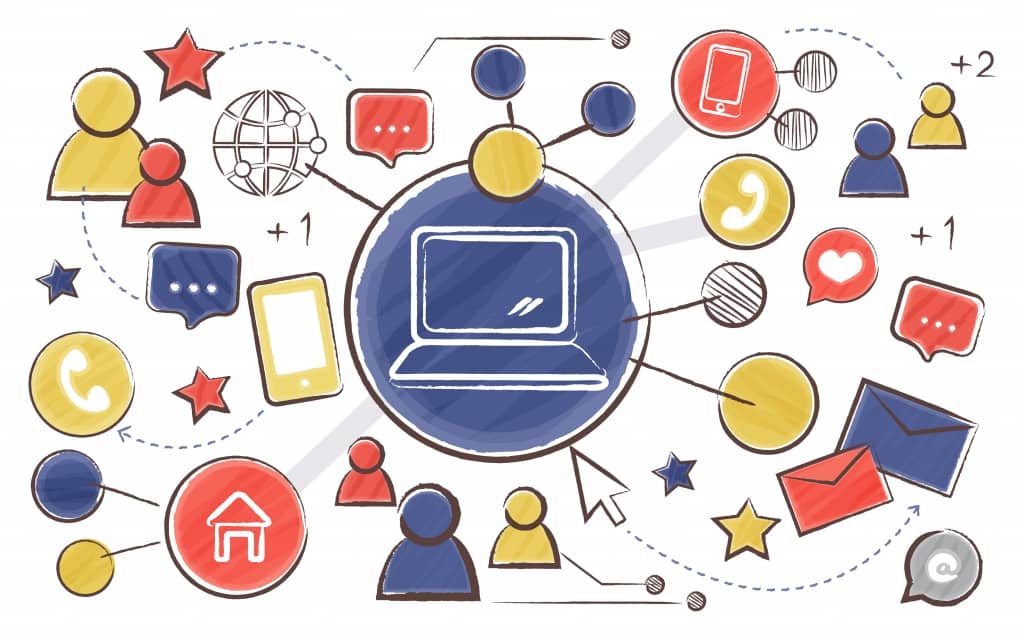Great internal communication strategy is the lifeblood of any successful organization. In today's hybrid work climate, ensuring transparent, frequent communication across distributed teams is more important than ever. Yet many companies still struggle to get messaging right when employees are both in and out of the office.
In this post, we'll explore best practices gleaned from internal comms pros at companies excelling in the hybrid era. You'll get insider tips for crafting relevant, engagement-driving content as well as for measuring what really resonates with your audience.
Table of Contents
- What Is Internal Communication Strategy?
- Why Internal Communication Strategy Matters?
- Who Is Responsible For Developing The Internal Communication Strategy?
- When Does The Internal Communication Strategy Take Place?
- What Channels Will The Internal Communication Strategy Use?
- How To Develop An Internal Communication Strategy?
- Make Internal Communication Effective With AhaSlides
- Key Takeaways
- Frequently Asked Questions
More Tips with AhaSlides

Looking for a way to engage your teams?
Get free templates for your next work gatherings. Sign up for free and take what you want from the template library!
🚀 Get templates for free
What Is Internal Communication Strategy?
Imagine you have a bunch of talented people working together in a company. Now, for this team to succeed, they need to communicate well, just like friends talking and sharing ideas. That's where the Internal Communication Strategy comes in!
Internal Communication Strategy is a comprehensive plan and framework designed to facilitate effective and efficient communication within an organization.
The primary goal of this strategy is to create a cohesive, informed, and engaged workforce, ultimately contributing to the organization's success and achievement of its objectives.

There are four types of internal communication:
- Top-down Communication (Management to employee communication): This is when information flows from the top of the organizational hierarchy (like managers or leaders) to the lower levels (employees). It's like a boss giving directions to the team. We use this type of communication to share important announcements, company goals, or new policies.
- Bottom-up Communication (Employee-up communication): It's the opposite of top-down communication. Information travels from the lower levels (employees) to the top (managers or leaders). It's like employees sharing their ideas, feedback, or concerns with their bosses.
- Horizontal/Lateral Communication (Peer-to-peer communication:): This type of communication happens between people at the same level within the organization. It's like coworkers chatting with each other to coordinate tasks or share updates.
- Diagonal Communication: Imagine this as a mix of top-down and horizontal communication. It occurs when people from different departments or levels need to work together on a project or exchange information.
Why Internal Communication Strategy Matters?
In any company, an internal communication strategy keeps employees connected and engaged. Important messages like new product launches, changes in company policies, or upcoming events are shared promptly. Employees can also provide feedback and ideas to the management, making them feel valued and part of the bigger picture.
With a solid strategy, the workplace becomes a happy and productive one, where everyone is on the same page, teamwork thrives, and the company flourishes!
Who Is Responsible For Developing The Internal Communication Strategy?
The responsibility for developing the Internal Communication Strategy typically falls on the shoulders of the organization's leadership team and the communication or HR (Human Resources) department. It involves collaboration between various stakeholders to create a well-rounded and effective strategy that aligns with the organization's goals and values.
Here are the key players involved in developing the Internal Communication Strategy:
- Leadership Team
- Communication or HR Department
- Communication Consultants: In some cases, organizations may seek external communication consultants or specialists to offer fresh perspectives and best practices in developing an effective strategy.

When Does The Internal Communication Strategy Take Place?
The internal communication strategy is ongoing and happens throughout the organization's life cycle. It's not a one-time thing but a continuous effort to ensure effective communication. Here are some key instances when it takes place:
- Organizational Planning: The strategy is built during planning to align communication with the company's goals.
- Regular Updates: It's revisited regularly to adapt to changes and evolving needs.
- Evaluations and Assessments: It is very important for the evaluation process including mid-year review, year-end review, and employee performance evaluation.
- During Changes: It becomes vital during major changes like mergers or leadership transitions.
- Introducing Policies: It ensures employees know about new policies or initiatives.
- During Crisis: It plays a crucial role in providing timely and accurate information during tough times.
- Employee Onboarding: It helps new employees feel welcomed and informed about their roles.
- Daily Operations: It ensures smooth communication between teams and leadership.
- Seeking Feedback: It comes into action when the company asks for employee feedback, manager feedback and encourages open communication.
What Channels Will The Internal Communication Strategy Use?
The channels used in an Internal Communication Strategy can vary depending on the organization's preferences, size, and the nature of the information to be conveyed. Here are some common communication channels that an Internal Communication Strategy may utilize:
- Intranet
- Team Meetings (Regular face-to-face or virtual meetings to discuss progress, share updates, and collaborate on projects.)
- Digital Collaboration Tools (Platforms like Microsoft Teams, Slack, or other project management tools.)
- Newsletters
- Town Hall Meetings
- Notice Boards
- Social Media (Internal Platforms)
- Feedback Surveys

How To Develop An Internal Communication Strategy?
Developing an effective Internal Communication Strategy involves several steps to ensure it aligns with the organization's goals and meets the communication needs of its employees. Here's a step-by-step guide to help you develop an Internal Communication Strategy:
1/ Define Communication Goals and Objectives:
Specify the goals you want to achieve with the strategy. Having specific objectives will direct your communication efforts, whether they are boosting collaboration, increasing employee engagement, or bringing employees in line with the company's vision.
2/ Identify Target Audiences:
Identify different employee segments and their unique communication needs. Tailor messages and channels to suit each group's preferences, roles, and requirements.
- For example, the marketing team might require frequent updates on new campaigns, while the IT department needs information about system updates and technical issues.
3/ Choose Communication Channels:
Depending on the sort of information to be provided and the target audience, choose the best communication methods. Think about utilizing a variety of channels, such as chat platforms, email, the intranet, team meetings, and digital collaboration tools.
4/ Establish Message Guidelines:
Define the tone, style, and language of communication. Ensure messages are clear, concise, and aligned with the company's values and culture.
5/ Implement Two-Way Communication:
Encourage open dialogue and feedback loops to create a culture of engagement. Provide avenues for employees to voice their opinions, suggestions, and concerns.
6/ Create a Communication Schedule:
Develop a timeline for regular communication. Determine the frequency of updates, meetings, and feedback sessions to keep employees informed and engaged.
7/ Prepare Crisis Communication Plan:
Have a plan in place to communicate effectively during times of crisis or challenging situations. By having a well-developed crisis communication plan, the company can effectively respond to challenges, keep employees informed, and maintain confidence in the organization's ability to navigate crises.
8/ Train and Educate:
Provide training to employees and managers on effective communication practices, especially for new tools or channels being introduced.
9/ Measure and Evaluate:
Set up metrics to assess the effectiveness of the Internal Communication Strategy. Gather feedback from employees and track key performance indicators to make improvements.
In addition, keep the strategy flexible and adjust it as needed based on feedback, changing organizational needs, and emerging communication technologies.
Make Internal Communication Effective With AhaSlides

AhaSlides can be a powerful tool to enhance internal communication and make it more effective in several ways:
- Interactive Meetings and Town Halls: You can use live polls, quizzes, and Q&A sessions to engage participants, gather real-time feedback, and encourage active participation in virtual meetings and town halls with employees.
- Real-time Feedback: With AhaSlides, you can quickly create and distribute polls, word cloud to employees. This enables you to gather valuable feedback on various topics, such as company initiatives, employee satisfaction, or training programs.
- Training and Learning: You can incorporate interactive quizzes and polls with pre-made templates to test employees' understanding and reinforce key concepts to enhance training sessions and workshops.
- Team Building Activities: AhaSlides offers team-building activities like icebreaker quizzes, games with a spinner wheel, random team generator. These activities can foster camaraderie and collaboration among employees, even in remote or distributed teams.
- Employee Recognition: AhaSlides can be utilized to recognize and celebrate employee achievements, milestones, and contributions. This boosts employee morale and motivation.
- Anonymous Feedback: The platform's anonymous polling feature can enable employees to provide feedback without fear of repercussions, fostering a more open and honest communication environment.
- Engaging Remote Employees: For organizations with remote or distributed teams, AhaSlides can be a valuable tool to ensure that all employees stay connected, engaged, and informed.
Key Takeaways
An effective internal communication strategy is the backbone of a well-functioning and harmonious organization. It strengthens the organization's culture and ultimately leads to improved productivity and success.
Frequently Asked Questions
How do you develop an internal communication strategy?
Here are steps to help you develop an internal communication strategy: define communication goals and objectives, identify target audiences, choose communication channels, establish message guidelines, implement two-way communication, create a communication schedule, prepare a crisis communication plan, train and educate, measure and evaluate, and adapt strategy as needed.
What are the four types of internal communication?
The 4 types of internal communication are Top-down Communication (Management-to-Employee communication), Bottom-up Communication (Employee-up communication), Horizontal/Lateral Communication (Peer-to-peer communication), and Diagonal Communication.
What are the internal communication strategy pillars?
The internal communication strategy pillars are defined goals, targeted audience segmentation, appropriate communication channels, message guidelines, two-way communication, and training and evaluation.
Ref: Forbes








